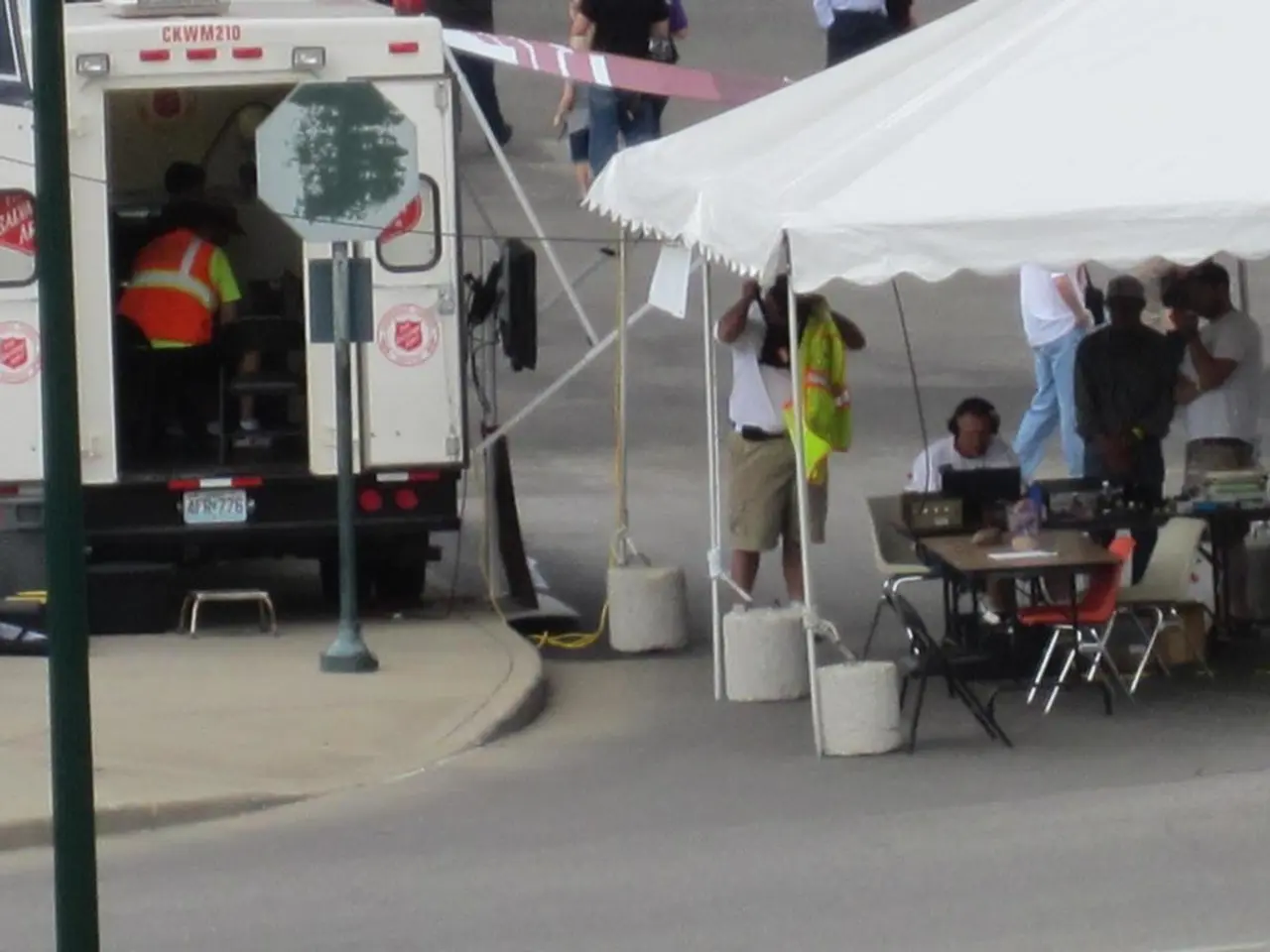Syria withdraws troops from Sweida following violent skirmishes and Israeli attacks
In a significant development, the Syrian army has begun withdrawing from the Druze-majority city of Sweida, marking a crucial step towards restoring peace in the region. The withdrawal, announced by the Syrian defense ministry, follows a series of events that have unfolded over the past week, including intensified sectarian violence between Druze and Bedouin militias, and a call from the United States for government forces to leave Sweida [1][2][3].
The ceasefire agreement, which was mediated by the United States, Turkey, and Arab countries, aims to halt military operations in the area and bring an end to the conflict that has claimed the lives of over 300 people and caused significant infrastructure damage since Sunday [1][2][4]. In line with the terms of the agreement, Druze factions and clerics have been appointed to manage internal security in Sweida, signifying a shift towards local community management of the situation rather than direct government military control [3].
Israel has also been actively involved, conducting airstrikes on Syrian government positions, reportedly to protect the Druze minority. This complex regional dimension to the local conflict adds another layer to the ongoing negotiations [2][3]. The United Nations has called for de-escalation and the protection of civilians, emphasizing the dire humanitarian conditions caused by the ongoing violence, displacement, and restricted access to essential services and humanitarian aid in the region [4].
However, the future of the ceasefire remains uncertain, as some Druze leaders have rejected early truce arrangements and previous attempts at peace have failed. Nevertheless, the current status reflects a partial de-escalation, with government forces pulling back and local Druze authorities stepping in to manage internal security, underpinned by international mediation and regional involvement [1][3].
| Aspect | Current Status | |-----------------------------|-------------------------------------------------| | Syrian military presence | Largely withdrawn from Sweida city | | Ceasefire | Agreed under mediation involving US, Turkey, Arab states | | Local security | Managed by Druze factions and clerics | | Regional involvement | Israeli airstrikes targeting Syrian gov't positions| | Humanitarian concerns | Significant displacement, infrastructure damage, and restricted aid access | | UN stance | Calls for de-escalation and civilian protection | | Stability outlook | Ceasefire fragile; some Druze opposition exists |
This represents an ongoing and fragile peace effort following intense recent fighting in the region [1][2][3][4]. The United States, a close ally of Israel, has urged all parties to deliver on the commitments they have made, in the hope of ensuring a lasting peace for the people of Sweida and the broader Syrian conflict.
- Following the ceasefire agreement, which was mediated by the United States, Turkey, and Arab countries, the Syrian military has begun withdrawing from Sweida, marking a shift towards local community management of the situation rather than direct military control.
- With the Syrian army's withdrawal, the United States has urged all parties, including Israel, which has been conducting airstrikes on Syrian government positions, to deliver on the commitments they've made for a lasting peace in the region, where displacement, infrastructure damage, and restricted aid access remain pressing humanitarian concerns.








